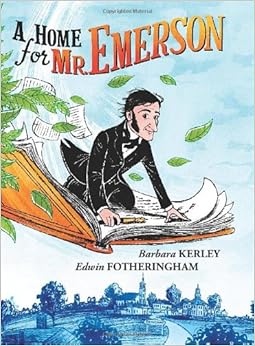One Crazy Summer
Written by Rita Williams-Garcia
Published by HarperCollins Publisher, 2010

What an interesting summer Delphine, Vonetta, and Fern are in for when Pa and Big Ma send them to their mothers in Oakland, California. They are in for a surprise when they get their and find that their mother wants nothing to do with them and ships them off to a summer camp which is sponsored by the Black Panthers. The summer of 1968 will be one the girls will never forget.
Age Range: 9-11 years
Page Count: 218
Suggested Delivery: Small Group Read, Read-Aloud
National Book Award Finalist, Coretta Scott King Award (Author), Newbery Honor Book, Scott O'Dell Award for Historical Fiction
Key Words: Summer, Sisters, Civil Rights, Independence, Camp.
Internet Resources:
Civil Rights Video
https://www.youtube.com/watch?v=S64zRnnn4Po
Since this book deals with the civil rights movement I think that it would be good to make a video like this one available to the students to watch. Some students may not know very much about the Civil Rights Movement and this is a very good video that gives them lots of information.
Author Page
https://www.harpercollins.com/cr-101662/rita-williams-garcia
This is a webpage for the author Rita Williams-Garcia. It has a description of who she is as well as a link to the authors website. On this page you can see all of the books that she has written and you can click on each of these books and read descriptions which is great for the students who want to read more of her books.
Vocabulary:
- Justice: judgement in the assignment of reward or punishment.
- Riot: a public act of violence or unruly behavior.
- Rally: a large gathering of people intended to create enthusiasm.
- Racism: the prejudice that one people are superior to another.
- Humiliation: strong feelings of embarrassment.
- Ignorance: the lack of knowledge or education.
- In the book Delphine and her sisters go on a day trip by themselves. Have the students plan a day trip to anywhere in the United States. Have them plan all of the places to visit and anywhere they want to eat. Ask them to try and figure out how much money it will cost to get there and how much everything there will cost.
- Have students do a little research into the people of the Civil Rights Movement. Ask each student to pick one person to research and create a profile of the person. Once everyone has created a profile have them share them with the class.
- Before: Give a mini lesson before reading about the Civil Rights Movement and some of the major events so that the students have context for reading the book. The video in the internet resources would be a great way to introduce the Civil Rights Movement.
- During: Break the book into sections. Ask the students to read a section and then at the end of it come up with something that happened in that part that they want to talk about. Have them get into groups of 5 and have discussions about what they came up with at the end of each section.
- After: Have the students write letters to Big Ma or Pa at the end of the summer telling them everything that they did that summer and how they liked living with Cecile. The students can pick to write it from any of the perspectives of the three sisters.
Have the students research the Black Panthers. After they have done more research about them, have them write a journal article from the perspective of Delphine about the Black Panther Party. Have them use examples from the text as support in their journal articles.










